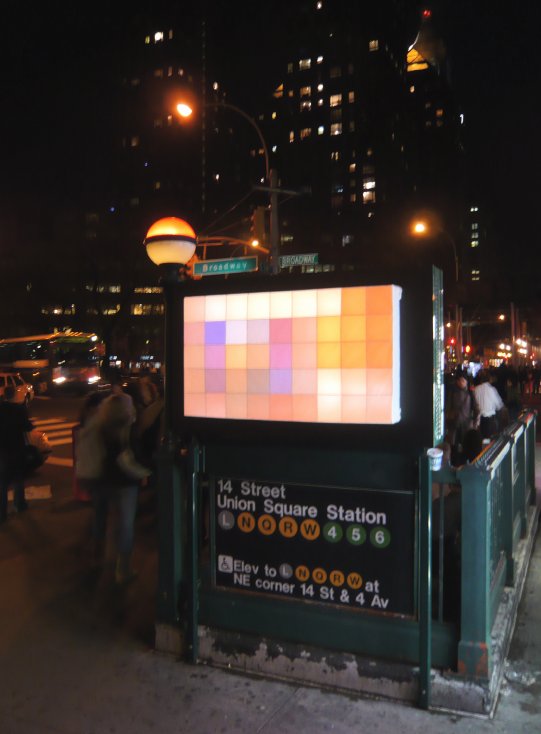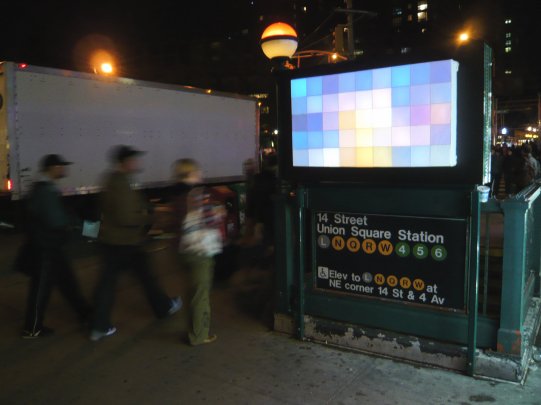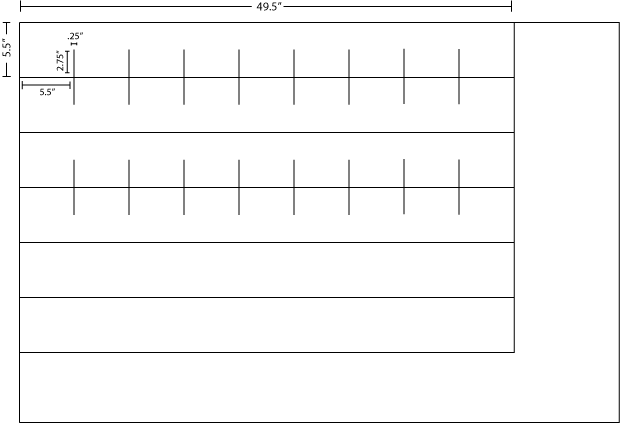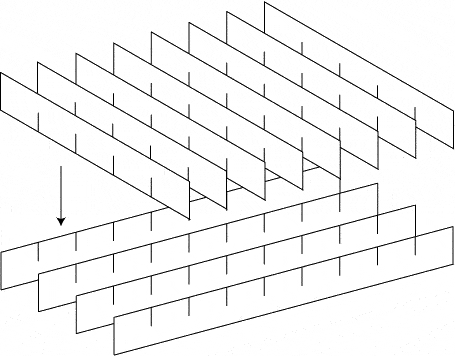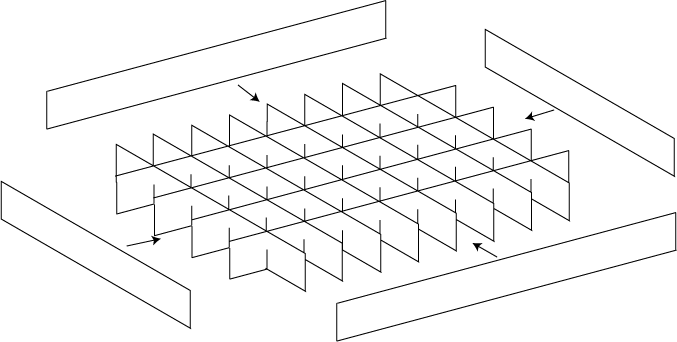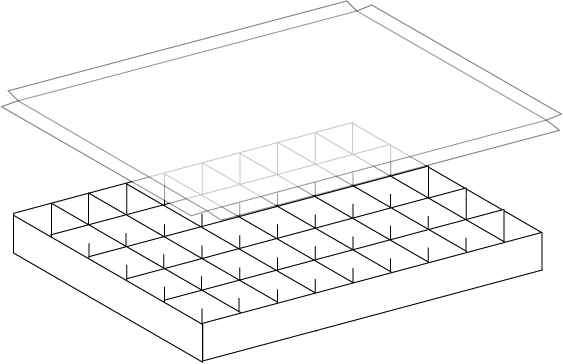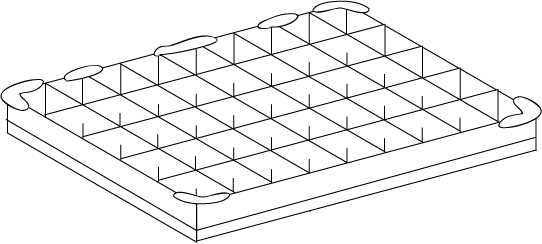Pixelator
Pixelator is an unauthorized on-going video art performance collaboration with the New York City Metropolitan Transit Authority, CBS Outdoor, and its selected artists.
Since 2003, the MTA has made available for exhibition purposes 80 LED screens located at subway entrances across New York City. Unfortunately, the high cost of exhibiting (an estimated $274,000 per month per screen) prevents most artists from having access to these facilities. While the MTA’s effort to create more opportunities for video art exhibition in public spaces is to be commended, selected works remain wholly fixated on commercial goods and media conglomerate events, a short-sighted curatorial choice that regrettably ignores the full potential of these promising exhibition spaces.
In an attempt to broaden the scope of MTA’s video art series, Pixelator takes video pieces currently on display and diffuses them into a pleasant array of 45 blinking, color-changing squares. Since the project is an anonymous collaboration, the resulting video is almost entirely unplanned and unanticipated, with the original artists helping to create new works of art without any knowledge of their participation.
(Translation: Pixelator turns those ugly, blinding video billboard ads into something a little more pleasant.)
![]()
![]()
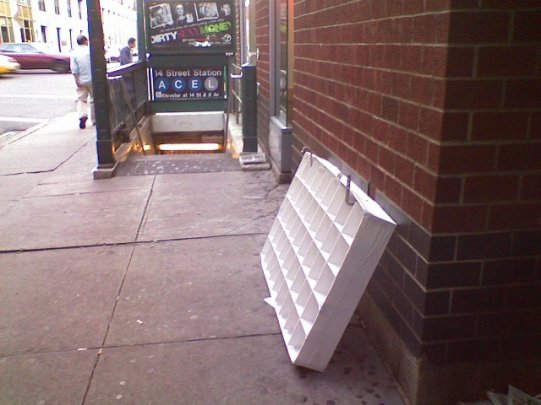
How To
Step 1: Measure your target.
In NYC, video billboards are 27.5″ x 49.5″. Make sure your target is the same size before using these numbers.
Step 2: Gather your materials.2 sheets of 40″x60″x3/16″ white foamboard (available at Pearl Paint for $7 a sheet)
- 1 sheet of Heavy Frost diffusion gel 4’x5′ (available at Kits and Expendables in Long Island City for $30)
- 1 roll of white duct tape
- 6 boxes of Stik Tak or similar adhesive
- glue gun and a lot of glue sticks
- tape measure or yard stick
- box cutter
- pencil
Step 8: Attach to video billboard and enjoy.
Jason Eppink’s Catalogue of Creative Triumphs, USA

PROFILE
Consisting of: Urban Transformations, Rapid Prototypes, Aesthetic Interventions, Interactive Experiences, Unauthorized Happenings, and Other Benevolent Mischief.
As well as: Experiments, Contraptions, Concepts, Curations, Ponderings, Pictures, Talkies, ‘Toons, Doodles, and Ditties, all of them being Analog Wonders and Digital Delights For You and Your Friends.
Created with love by A Dude Who Is Just Trying To Make Things A Little Better.
Jason Eppink is an American curator, designer, and prankster. His projects emphasize participation, mischief, surprise, wonder, generosity, transgression, free culture, and anti-consumerism, and they are staged in public spaces and online as street art, urban interventions, and playful online services and hoaxes, frequently for non-consenting audiences.Wikipedia
Main Research Source
Wikipedia description:
Notable Design/Prank Projects
Pixelator
In 2007, Jason Eppink created a series of boxes from foam core and diffusion gel that he placed over video billboards at the entrances to New York City subway stations, turning advertisements into abstract geometric art. Eppink published a video and diagrams to encourage others to continue and improve on the project.

